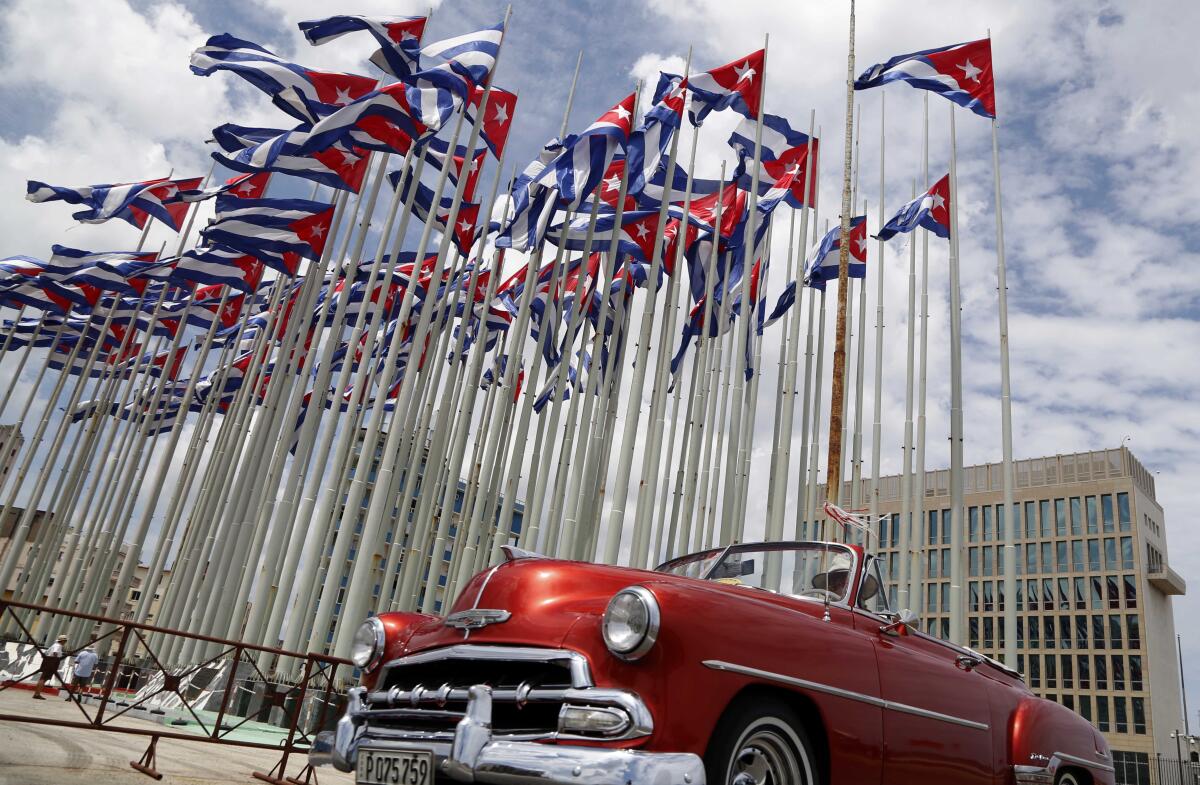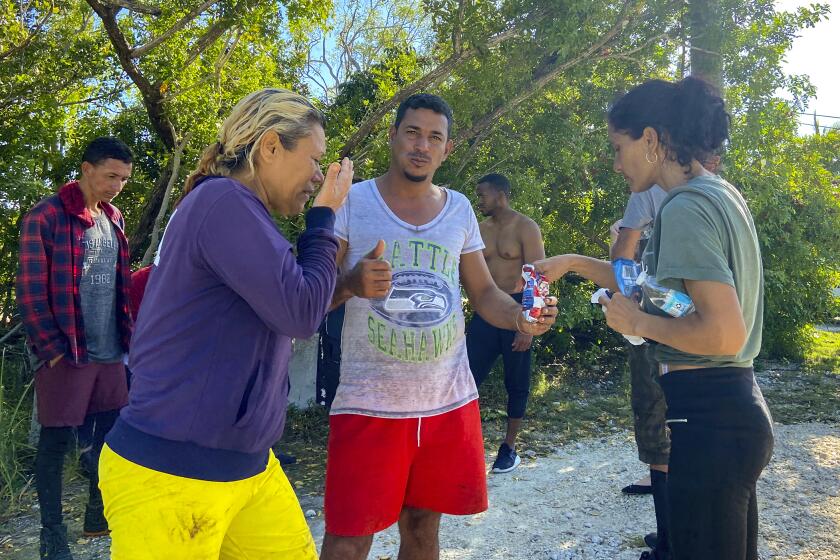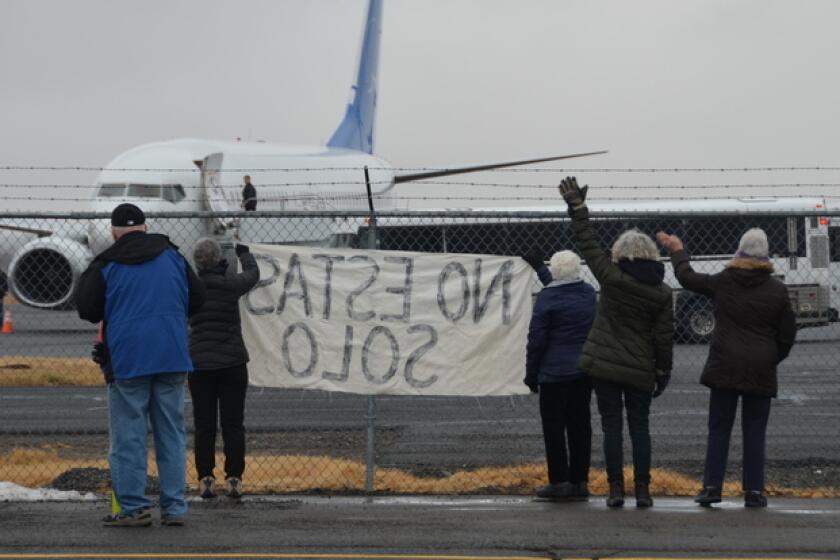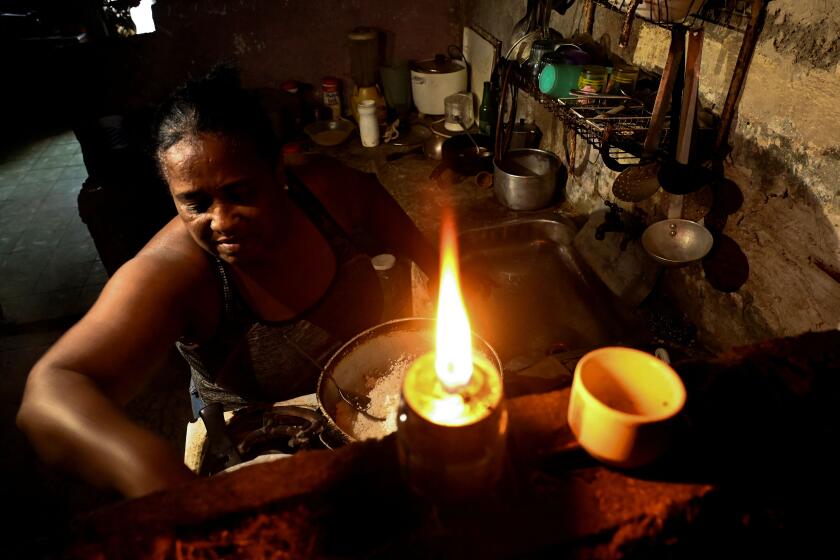Facing migration flood, U.S. resumes services at embassy in Cuba

- Share via
HAVANA — Grappling with the biggest flood of Cuban migrants in decades, the United States reopened their long-closed legal pathway on Wednesday by resuming all visa services at its embassy in Havana.
Hundreds of thousands of Cubans desperate to leave the island’s flailing economy and reunite with family in the U.S. but unable to get visas in their own country have been forced to fly to Central America and make tortuous journeys north, or navigate the Florida Strait in rickety vessels. The number of Cubans detained on the U.S. southern border is now second only to the number of Mexicans, according to Customs and Border Protection figures.
Hundreds of people gathered outside the embassy for visa appointments Wednesday, or waited outside for loved ones.
“This could help reduce illegal immigration, and make it so people can go to the United States in a safer way,” said applicant Ariel Arzuaga, a 59-year-old technician once deported from Panama, one of the Central American jumping-off points to U.S.-bound migrants in recent years.
Visa services were fully restarting Wednesday for the first time since a virtual shutdown prompted by health incidents among staff slashed the American presence in Havana in 2017.
The embassy gradually began to expand such services and diplomatic staffing in a limited capacity in May. Now the U.S. could give at least 20,000 visas a year.
More than 500 Cuban immigrants have come ashore in the Florida Keys since the weekend, straining U.S. border agencies both on land and at sea.
The U.S. Embassy said on Friday that “the United States is working to ensure safe, legal, and orderly migration.” Officials there declined to comment on events Wednesday.
In late December, U.S. authorities reported stopping Cubans 34,675 times along the Mexico border in November, up 21% from 28,848 times in October.
The growing migration is due to economic problems, discontent among Cubans and the relative ease with which Cuban migrants can obtain legal status in the U.S., another holdover from the Cold War.
Many Cubans have been traveling fewer than 100 miles by sea to Florida, often arriving in precariously constructed boats packed with migrants. Most recently, a wave of migrants arriving by boat in the Florida Keys this week prompted the temporary shutdown of Dry Tortugas National Park.
News Alerts
Get breaking news, investigations, analysis and more signature journalism from the Los Angeles Times in your inbox.
You may occasionally receive promotional content from the Los Angeles Times.
The full resumption of visa work at the embassy comes after a series of migration talks and visits by U.S. officials to Havana in recent months.
Recent small steps are a far cry from relations under President Obama, who eased some decades-long sanctions during his time in office and made a historic visit to the island in 2016. But visa and consular services were closed on the island in 2017 after embassy staff were afflicted in a series of health incidents that remain publicly unexplained.
The Department of Homeland Security inadvertently tipped off the Cuban government this month that immigrants the agency sought to deport to the country had asked the U.S. for protection from persecution or torture.
Under President Biden, the U.S. has eased some restrictions on things such as remittances and family travel from Miami to Cuba, but has fallen short of the hopes of many in Cuba that a Biden presidency would return the island to what’s remembered from the Obama era.
Restrictions on tourist travel to Cuba, and imports and exports of many goods, remain in place.
Also kindling tensions has been the Cuban government’s harsh treatment of participants in the island’s 2021 protests, including hefty prison sentences doled out to minors, a constant point of criticism by the Biden administration.
Hundreds of Cubans have taken to the streets in Havana demanding the restoration of electricity.
Cuban officials have repeatedly expressed optimism about talks with the U.S. and steps to reopen visa services. Cuban Deputy Foreign Affairs Minister Carlos Cossio said in November that ensuring migration through safe and legal pathways is a “mutual objective” of the two countries.
But Cossio also blamed the flight of tens of thousands from the island on U.S. sanctions, saying that “there’s no doubt that a policy meant to depress the living standards of a population is a direct driver of migration.”
More to Read
Sign up for Essential California
The most important California stories and recommendations in your inbox every morning.
You may occasionally receive promotional content from the Los Angeles Times.













